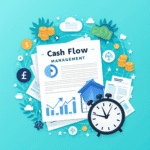Missed an Estimated Tax Payment? Here’s What to Do
If you’ve missed an estimated tax payment, you might face penalties. For small business owners, freelancers, or anyone paying self-employment taxes, this can be a costly mistake. But don’t worry—there are ways to minimize the damage. Let’s walk through what you need to know and do to get back on track.

What Happens When You Miss an Estimated Tax Payment?
Missing an estimated tax payment can result in a non-deductible interest penalty. This applies to anyone who doesn’t pay enough federal income tax in advance, whether through withholding or timely estimated tax payments.
The penalties add up quickly, so it’s essential to act fast. But how? Keep reading to find out.
Understanding Estimated Tax Deadlines
For most taxpayers who use the calendar year:
- 2024 Payments: April 15, June 17, September 16, 2024, and January 15, 2025.
- 2025 Payments: April 15, June 16, September 15, 2025, and January 15, 2026.
Missing these deadlines can trigger penalties. But knowing the dates is the first step to staying ahead.
Best Ways to Pay Your Estimated Taxes
Choosing the right payment method is key to avoiding issues. Here are the top options:
1. IRS Direct Pay
Pay directly from your bank account at no cost.
- Why Choose This? It’s free, secure, and provides instant confirmation.
2. Electronic Federal Tax Payment System (EFTPS)
Set up payments at EFTPS.gov for a detailed payment history.
- Why Choose This? It’s great for tracking and scheduling payments.
3. IRS2Go App
Pay via the IRS’s mobile app using Direct Pay or a card.
- Why Choose This? Ideal for on-the-go taxpayers.
4. Credit/Debit Cards or Digital Wallets
Pay through an IRS-authorized processor.
- Why Choose This? It’s convenient, though it comes with service fees.
5. Mail a Check or Money Order
Send Form 1040-ES with your payment by mail.
- Why Choose This? It’s an option for those who prefer traditional methods, though it risks delays.
What Happens If You Still Miss a Payment?
If you miss a payment, the IRS calculates penalties based on how late you are. For example:
- Penalty Period: From the missed deadline until the payment is made.
- Rates: These vary but are calculated quarterly.
Example: Let’s say you miss a $30,000 payment due on September 16, 2024. If you pay on January 15, 2025, you’ll owe penalties for the period between those dates.
Quick Tip: Making a catch-up payment stops the penalty from growing, but it doesn’t erase what you already owe.
How to Avoid Penalties
The good news? There are ways to avoid or reduce penalties.
1. Pay 90% of Your Current Year’s Tax
If you pay 90% of what you owe for the year by the deadlines, you won’t face penalties.
2. Pay 100% (or 110%) of Last Year’s Tax
If your adjusted gross income (AGI) is below $150,000, paying 100% of last year’s tax avoids penalties. For those above this threshold, paying 110% is required.
3. Use the Annualized Income Method
For seasonal businesses or uneven income, you can base payments on what you earn during each quarter. This method is more complex but helps avoid penalties.
Special Rules for Farmers and Fishermen
If you’re a farmer or fisherman, the IRS has special rules for estimated taxes. Check IRS Form 2210-F for details.
Takeaways
Missing an estimated tax payment isn’t ideal, but it’s not the end of the world. Here’s how to stay ahead:
- Make timely payments using secure methods like IRS Direct Pay or EFTPS.
- Catch up on missed payments quickly to stop penalties from growing.
- Understand exceptions to reduce penalties when possible.
By taking these steps, you can avoid unnecessary costs and stay compliant with the IRS.
Here is why you may not get full tax refund from the IRS. To learn how to earn tax-free income with the Augusta Rule, we have this article with all the information you need.
What is an EIN and how can you apply for it for your business? Read about it here and follow the IRS guidelines and set your business up for success by applying for an EIN today!





